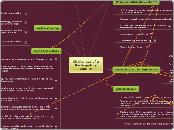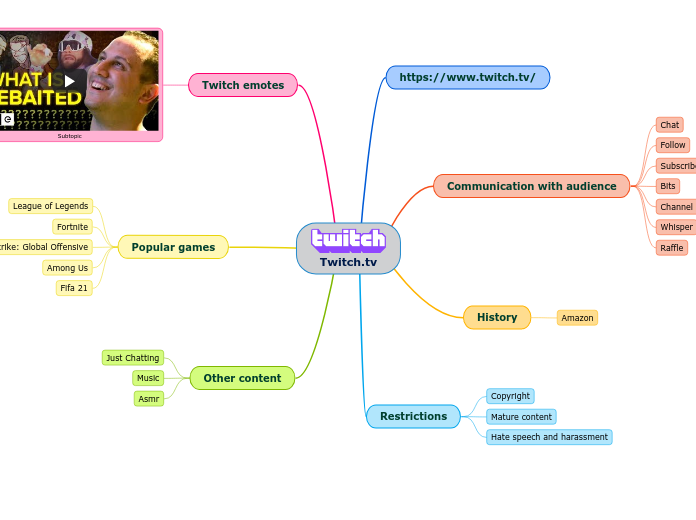Schools need to train students to become collaborative problem solvers.
AASL Standards
3.2.3 Demonstrate
teamwork by working
productively with
others.
3.3.1 Solicit and respect
diverse perspectives
while searching
for information,
collaborating
with others, and
participating as
a member of the
community.
By becoming collective problem solvers problems of greater scale can be tackled than by single individuals
AASL Standards
3.3.3 Use knowledge and
information skills
and dispositions
to engage in public
conversation and
debate around issues
of common concern.
3.3.4 Create products that
apply to authentic,
real-world contexts.
3.3.5 Contribute to the
exchange of ideas
within and beyond the
learning community.
Bridges the gap socially, politically, economically between the online world and the real world experiences.
AASL Standards
2.3.1 Connect
understanding to
the real world.
Integration of media education has been hapazard and needs to be better integrated into the education system
Ways to improve media literacy outside the classroom
Parent involvement
After school programs
Challenges of a Participatory Culture
Core Literacy Skills
Students are able to search for and apply information to create new ideas.
AASL Standards
4.2.1 Display curiosity by
pursuing interests
through multiple
resources.
1.1.7 Make sense of
information gathered
from diverse sources
by identifying
misconceptions,
main and supporting
ideas, confl icting
information, and point
of view or bias.
2.1.1 Continue an inquiry-
based research process
by applying critical-
thinking skills (analysis,
synthesis, evaluation,
organization) to
information and
knowledge in order
to construct new
understandings, draw
conclusions, and create
new knowledge.
The abiility to synthesize information from a a varied or media platforms.
AASL Standards
1.1.8 Demonstrate mastery
of technology tools for
accessing information
and pursuing inquiry.
Judgement or the ability to evaluate the credibility of information sources.
AASL Standards
1.1.5 Evaluate information
found in selected
sources on the basis
of accuracy, validity,
appropriateness for
needs, importance,
and social and
cultural context.
1.1.7 Make sense of
information gathered
from diverse sources
by identifying
misconceptions,
main and supporting
ideas, confl icting
information, and point
of view or bias.
1.2.2 Demonstrate
confi dence and self-
direction by making
independent choices
in the selection
of resources and
information.
Students must learn how to "read" one source of information against another.
Collective intelligence or the ability to work with others for a common goal.
AASL Standards
2.1.5 Collaborate with
others to exchange
ideas, develop new
understandings, make
decisions, and solve
problems.
3.1.2 Participate and
collaborate as
members of a social
and intellectual
network of
learners.
3.2.2 Show social
responsibility by
participating actively
with others in learning
situations and by
contributing questions
and ideas during
group discussions.
3.2.3 Demonstrate
teamwork by working
productively with
others.
The ability to multi-task or to recognize the important details over many informational environments.
1.1.5 Evaluate information
found in selected
sources on the basis
of accuracy, validity,
appropriateness for
needs, importance,
and social and
cultural context.
1.1.6 Read, view, and
listen for information
presented in any
format (e.g., textual,
visual, media, digital)
in order to make
inferences and
gather meaning
Performance or the ability to adopt an alternative identity for the purpose of discovery.
AASL Standard
4.3.4 Practice safe and ethical behaviors in personal electronic communication and interaction.
4.2.1 Display curiosity by pursuing interests through multiple resources.
Demonstrate distributed cognition skills or the ability to interact with tools that expand our mental capacities.
AASL Standards
1.1.8 Demonstrate the mastery of technology tools for accessing information and pursuing inquiry.
includes the ability to utilize social institutions, and practices or experts who may be helpful in problem solving
AASL Standards
4.1.7 Use social networks and information tools to gather and share information.
Appropriation or the ability to meaningfully sample and remix media content
AASL Standards
2.1.6 Use the writing process, media and visual literacy, and technology skills to create products that express new understandings.
using simulation to interpret and construct models of real work processes.
AASL Standards
2.1.4 Use techology and other information tools to analyze and organize information.
1.1.8 Demonstrate mastery of technology tools for accessing information and pursuing inquiry.
Games offer a way to learn through direct experience which can be translated to real world learning.
Using play and experimentation as a type of problem solving
AASL Standards:
1.2.5 Demonstrate adaptability by changing the inquiry focus, questions, resources, or strategies when necessary to achieve success.
1.3.4 Contribute to the exchange of ideas within the learning community.
4.1.4 Seek information for personal learning in a variety of formats and genres
Students engaged in play as a learning environment are more motived because the outcome matters more to that individual
Participation Gap
Students who are not media savvy in turn struggle to keep up
AASL Standards
1.4.4 Seek appropriate help
when it is needed.
Students who are media savvy are often unable to use their best learning techniques in an effort to provide a level playing field in the classroom
AASL Standards
1.1.1 Follow an inquiry-
based process in
seeking knowledge in
curricular subjects,
and make the real-
world connection for
using this process in
own life.
1.1.2 Use prior and
background knowledge
as context for new
learning.
it's not enough for children to have technology, but also be able to utilize the extent of that technology to its fullest.
AASL Standards
1.1.8 Demonstrate mastery
of technology tools for
accessing information
and pursuing inquiry
1.2.3 Demonstrate creativity
by using multiple
resources and formats
Unequal access to opportunitites that will prepare children for the world at large
AASL Standards
1.1.8 Demonstrate mastery
of technology tools for
accessing information
and pursuing inquiry
Transparency
Students are adept at using media, but are limited in ability to examine the media they are using.
AASL STandards
1.1.7 Make sense of
information gathered
from diverse sources
by identifying
misconceptions,
main and supporting
ideas, confl icting
information, and point
of view or bias.
Determining the value and quality of information is more challenging
site format can affect how much credibility is attached to a website
AASL Standards
1.2.2 Demonstrate
confi dence and self-
direction by making
independent choices
in the selection
of resources and
information.
1.2.4 Maintain a critical
stance by questioning
the validity and
accuracy of all
information.
students have no way of determining, hyowever what is amateur and what is professional.
AASL Standards
1.2.4 Maintain a critical
stance by questioning
the validity and
accuracy of all
information.
students may believe all information is authentic
AASL Standards
1.2.4 Maintain a critical
stance by questioning
the validity and
accuracy of all
information
Lack of guidance or supervision in new media, lack of ethical oversight, unwritten norms exist about acceptable behaviors.
AASL Standards
1.3.3 Follow ethical and legal
guidelines in gathering
and using information
1.3.5 Use information
technology responsibly
Afffinity Spaces
Involvement in affinity spaces bridges the gap between consumers of media and producers of media as everyone has a stake the culture that is created
AASL Standards
1.2.3 Demonstrate creativity
by using multiple
resources and formats.
1.1.9 Collaborate with others
to broaden and deepen
understanding.
57% of teens who use the internet are creators of media
AASL Standards
2.1.6 Use the writing
process, media and
visual literacy, and
technology skills
to create products
that express new
understandings.
Students are more engaged in the cultural economy and the intellectual property rights of others when the create their own media.
AASL Standards
3.3.7 Respect the principles
of intellectual freedom
1.3.1 Respect copyright/
intellectual property
rights of creators
and producers.
opportunity for learning through common endeavors
Community learning experiences
Circulations such as blogging, podcasting of producing vidoes.
4.1.8 Use creative and artistic formats to express personal learning
Collaborative problem solving such as contributions to wikis or through AR gaming
AASL Standards
1.1.9 Collaborate with others to broaden and deepen understanding.
Expressions such as digital sampling, zines, mashups
Affilliations such as social media, gaming and forums
AASL Standards
1.1.9 Collaborate with others to broaden and deepen understanding.
3.1.2 Participate and collaborate as members of a ocial and intellectual network of learners.
What is a participatory culture?
Shapes the flow of media
AASL Standards
4.1.8 Use creative and artistic formats to express personal learning
Collaboration in problem solving.
AASL Standards
3.1.2 Participate and
collaborate as
members of a social
and intellectual
network of
learners.
3.2.2 Show social
responsibility by
participating actively
with others in learning
situations and by
contributing questions
and ideas during
group discussions.
3.2.3 Demonstrate
teamwork by working
productively with
others.
3.3.5 Contribute to the
exchange of ideas
within and beyond the
learning community.
produces new creative forms
AASL Standards
4.1.8 Use creative and
artistic formats to
express personal
learning.
a culture in which there are formal and informal memberships and afffliations
AASL Standards
3.1.2 Participate and
collaborate as
members of a social
and intellectual
network of
learners.
Provides for creative expression and active participation.
AASL Standards
1.3.4 Contribute to the
exchange of ideas
within the learning
community.
1.4.2 Use interaction
with and feedback
from teachers and
peers to guide own
inquiry process.
3.2.2 Show social
responsibility by
participating actively
with others in learning
situations and by
contributing questions
and ideas during
group discussions.
3.2.3 Demonstrate
teamwork by working
productively with
others.
Shift of literacy from an isolated personal experience to a community experience.
AASL Standards
1.1.9 Collaborate with others
to broaden and deepen
understanding.
1.3.4 Contribute to the
exchange of ideas
within the learning
community.
3.1.2 Participate and
collaborate as
members of a social
and intellectual
network of
learners.
3.2.1 Demonstrate
leadership and
confi dence by
presenting ideas
to others in both
formal and informal
situations.
3.2.2 Show social
responsibility by
participating actively
with others in learning
situations and by
contributing questions
and ideas during
group discussions.
3.2.3 Demonstrate
teamwork by working
productively with
others.









